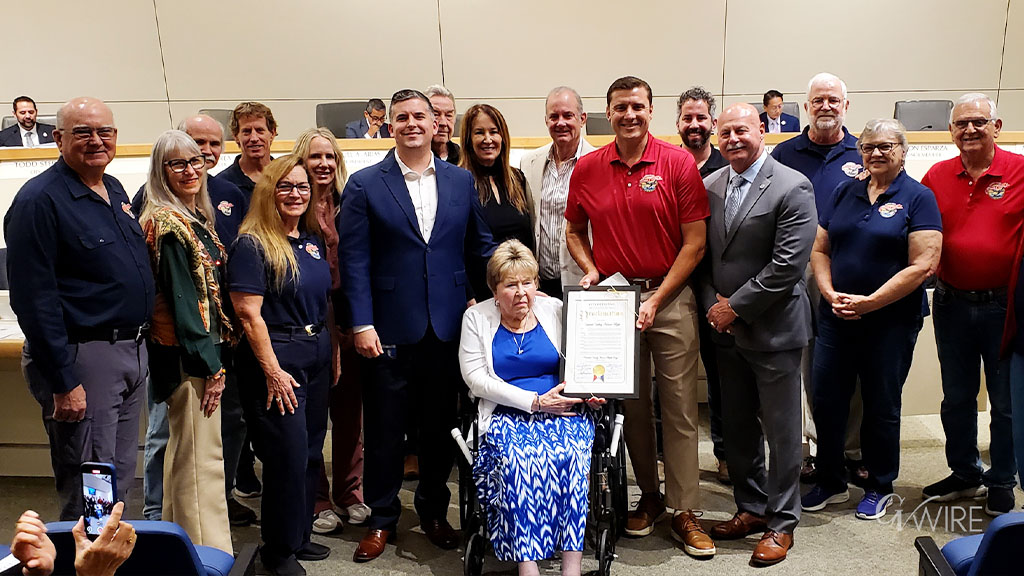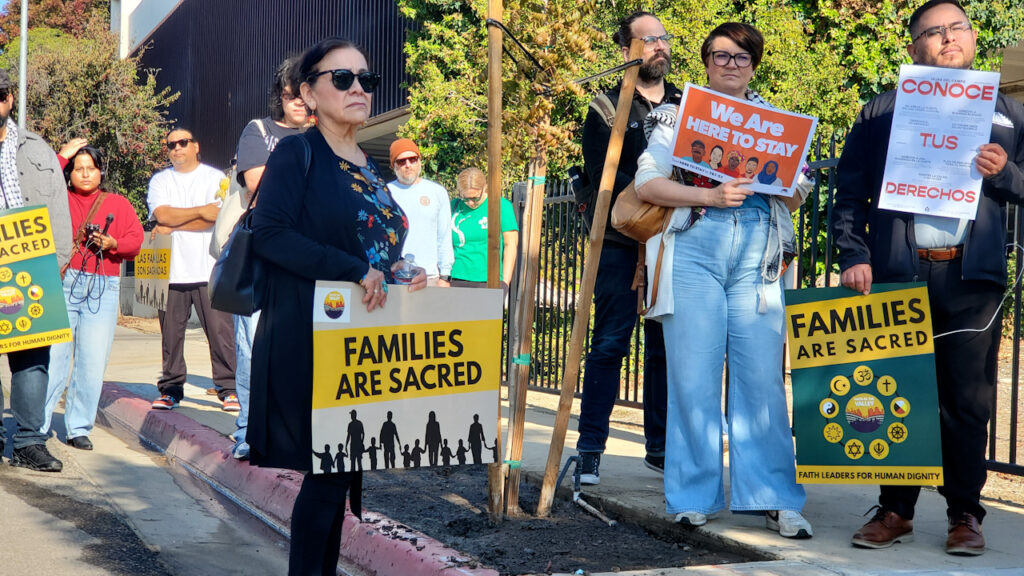LA County's decision to dissolve its joint homelessness agency with the city highlights a statewide pattern of city-county tensions over homeless services. (Shutterstock)

- LA County is dismantling its 30-year joint homelessness agency despite objections from Mayor Karen Bass.
- City-county coordination failures are affecting homeless services in San Diego, Turlock, and beyond.
- Without clear state mandates, cities and counties battle over who should fund critical homeless services.
Share
This story was originally published by CalMatters. Sign up for their newsletters.
For three decades, the city and county of Los Angeles managed California’s biggest homelessness crisis together.
They had equal say in big funding decisions, and worked in tandem to coordinate housing programs through a joint city-county agency called the Los Angeles Homeless Services Authority.
But after scathing audits criticizing the homeless authority, the county is blowing up that joint agency and starting over — despite the objections of LA Mayor Karen Bass. Now, questions remain about how the shakeup will affect the more than 75,000 unhoused people living in LA County.
It’s the most dramatic recent example of a phenomenon playing out all over California. Cities which supply shelter beds, and counties, which provide crucial mental health and addiction treatment, can’t effectively address homelessness unless they work well together. But all too often, they don’t.
In multiple cities, mayors are publicly attacking their counties for failing to pull their weight. In San Diego, a 150-bed shelter created as a partnership between the city and county is in jeopardy, as both sides squabble over who should pay for what. In the San Joaquin Valley, the city of Turlock is refusing to let Stanislaus County fund a shelter there. A state bill that would have forced counties to pay for half the cost of city-run homeless shelters faced fierce pushback from counties, and was swiftly gutted.
There’s no shortage of evidence on why working together is beneficial. Cities don’t have behavioral health departments, or funding for those services. So when residents of city homeless shelters need mental health or addiction treatment, which they often do, that falls on the county.
The League of California Cities and the California State Association of Counties even released a report in 2018 highlighting the importance of cities and counties addressing homelessness together.
There is no mandate from the state that lays out how much of the responsibility should fall to a city and how much should fall to a county. Especially in tight budget years such as this one, cities don’t want to pay for services they could pass on to the county – and vice versa. And neither wants to take the blame for falling short as they struggle under the immense challenge of getting people off the street.
While both sides bicker, the fate of real shelters that provide lifelines for real people hangs in the balance.
“The lack of partnership between cities and counties around people living in shelters is a major problem,” said Sen. Catherine Blakespear, a Democrat from Encinitas, whose Senate Bill 16 would have forced counties to shoulder half the cost of city shelters until it was amended in a way that weakened her proposed requirement.
LA County Overhaul
The Los Angeles Homeless Services Authority formed in the 1990s as a result of a series of lawsuits claiming that homeless Angelenos couldn’t access county services. The joint agency was supposed to fix that problem by forcing the city and county to work together.
City and county officials have pointed out some of the good that came out of that partnership. The two entities are working together to improve the way they share client data across homelessness and mental health systems. They have a joint team of outreach workers that can go anywhere in the county without being restricted by the boundaries of its 88 cities, which in addition to Los Angeles include Long Beach and Glendale.
Last year, the city of LA saw a 10% decrease in street homelessness — the first double digit decrease in at least nine years.
LA County voters showed they were willing to pay more to address homelessness when they backed a sales tax to fund those programs in 2017 and in 2024. The new money forced the homeless services authority to grow quickly. Things didn’t go smoothly.
Two critical audits since November found the agency was failing to properly track spending and outcomes. The LA County Board of Supervisors voted last month to pull more than $300 million – more than a third of the joint agency’s funding — and more than 700 employees out of the joint authority and into a new county agency.
After that, in quick succession, the head of the joint agency said she would resign and a federal task force announced it would investigate the agency for fraud. The LA City Council is considering pulling its funding as well.
The result will be a complete overhaul of how the county administers its homelessness programs, scheduled to take about a year.
While the problems at the homeless authority were obvious, the county’s gutting of the joint agency — done over the objections of Mayor Bass — created more friction between the city and county.
In a letter to the county before the vote, Bass and Councilmember Nithya Raman warned pulling funding from the joint agency would “create a monumental disruption in the progress we are making and runs the serious risk of worsening our homelessness crisis.”
The county’s vote to do it anyway “felt like a breaking of a relationship that was moving towards greater trust,” Raman, who chairs the city’s Housing and Homelessness Committee, said in an interview.
Now, Raman said, programs that received city and county funds through the joint agency, such as a $170 million program that provides two-year rental subsidies, are scrambling to figure out how to separate the city and county funds. She’s also worried about shelter programs falling through the cracks during the transition.
“How are we going to make sure those shelters stay in place?” Raman asked.
The new agency will have heightened accountability measures – something multiple audits found that the old joint-agency lacked. The agency will report to the county annually on its progress, and quarterly on an online dashboard, said Cheri Todoroff, executive director of the county’s Homeless Initiative.
By operating within the existing county infrastructure, the new agency will benefit from tools the county has been using for decades to account for spending and monitor progress, said Sarah Mahin, director of the county’s Housing for Health program, which will be a model for the new agency.
LA County Supervisor Lindsey Horvath, who spearheaded the plan to create the new agency, said the intention isn’t to keep the city out of its homelessness efforts, but to be more efficient by consolidating homeless services that are being provided across more than a dozen different county departments. The county also will review all existing contracts, and cancel the ones that aren’t delivering results, she said.
“The city will be as involved as they choose to be,” Horvath said.
A Fight Over a San Diego Shelter
In this year’s state of the city speech, San Diego Mayor Todd Gloria attacked his county counterparts for their “inaction” in helping unhoused people suffering from mental illness and addiction. Last month, he put the county on blast again in his email newsletter, saying it must “step up” to save a homeless shelter.
“Generally speaking, I would say where the city is responding to this with an all hands on deck approach, I don’t think the same can be said for my county or for other counties,” Gloria said in an interview with CalMatters.
That tension came to a head with a dispute over the Rosecrans Shelter, where 150 people sleep in bunk beds inside a giant tent set up in the parking lot of the county’s psychiatric hospital. The city runs the shelter and the county provides behavioral health services, the land and utilities, via a connection to the neighboring hospital.
The county is preparing to demolish a vacant building on that site, which will sever the shelter’s connection to water, sewer and power.
Now, the fate of the shelter residents is up in the air. Gloria wants the county to pay to reestablish the utilities, which is estimated to cost as much as $2 million. He also wants the county to relocate the shelter residents, most of whom are struggling with mental illness or addiction. They can’t stay at the shelter during the demolition, he said – it will be too disruptive.
Spencer Katz, director of strategic initiatives for San Diego County Supervisor Terra Lawson-Remer, disagrees. There’s no reason people can’t live at the shelter during the demolition, he said.
“With respect to the mayor, who’s neither an expert on demolition nor on behavioral health, that claim simply doesn’t hold water,” he said.
Lawson-Remer has proposed using $800,000 in leftover federal COVID recovery funds to pay for the utility connections, Katz said, and she wants to work with the city to find the rest of the money.
But Gloria has proposed closing the shelter, as he stares down a $258 million budget deficit.
The city and county have until July 1, when their current agreement expires, to find a solution.
Newsom Calls Out Turlock Mayor
Meanwhile, in the San Joaquin Valley, another city-county dispute over homelessness caught the attention of Gov. Gavin Newsom.
“Truly a ridiculous lack of local leadership – an absolute moral failure,” the governor said last month on X.
He was talking about the city of Turlock, which has refused to allow Stanislaus County to support an existing homeless shelter in the city. The county awarded nearly $270,000 in state funding to the 50-bed shelter. But the money was contingent on the cooperation of the city, which would have to write a letter of support and allocate a token $1 to the program.
The city said no.
“It’s not about the dollar — it’s about accountability,” Turlock Mayor Amy Bublak said in an interview with CalMatters. The shelter is open at night, but during the day, the people who sleep there have nowhere to go – and nowhere to use the bathroom, Bublak said. As a result, the nearby businesses are complaining of public urination and other disruptions, she said. The mayor asked We Care, the organization that runs the shelter, to keep its bathroom open during the day, but they weren’t able to come to an agreement, she said.
Stanislaus County Supervisor Terry Withrow called the city’s refusal “pretty disappointing.” The people in the shelter need help, he said, and closing the program won’t make them go away.
“I don’t know how you can turn your back on these individuals and just let them die out there,” he said.
We Care did not respond to a request for comment. In a statement to CBS13, We Care said it might be forced to shut down the shelter without that funding.
Bill Would Have Made Counties Pay More
The bill introduced by Blakespear, the Encinitas state senator, would have required counties to cover half the cost of operating city-run homeless shelters in order to be eligible for state homelessness funding. Counties came out in force against that mandate, and Blakespear removed it from the bill.
That was a disappointment for San Jose Mayor Matt Mahan. He’s leading a push to open about 1,000 new temporary housing units this year, mostly in converted motels and tiny homes – and he wants Santa Clara County to provide case management services to the residents.
“We have basically reached our limit,” Mahan said. “We can’t defund core city services that are already understaffed. So if the county doesn’t step in…We can’t scale anymore, which means we leave thousands of people outside.”
Santa Clara County Supervisor Susan Ellenberg said the city and county already work together on many shelter programs. But she objected to forcing the county to pay for services.
“Without having any control over the number of shelters or tiny homes that the city decides to build,” she said, “we don’t have control over our budget.”
This article was originally published on CalMatters and was republished under the Creative Commons Attribution-NonCommercial-NoDerivatives license.




















